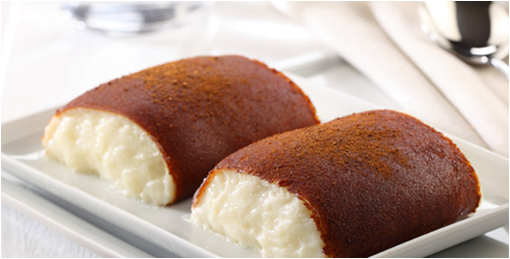Nutrition is a central fact of existence for all
living things, it is something we must achieve in order to remain alive. We may
approach the subject of nutrition in Turkey, and Turkish cuisine, from a
variety of standpoints.
Different societies have different cultures, and
among these cultural differences is the element of eating habits. All people
must eat to live. But what a person eats depends on both geographical
conditions, and upon his culture.
Throughout our country, eating habits exhibit
variety according to history, region, and even among various sections of
society such as urban or village dwellers. In addition, we can speak of common
features despite these differences.
With a long history, the Turks have a rich culinary
culture. This wealth is evident in the rich variety of foods.
In
generally, we observe the following characteristics in Turkish foods:
- Nomadism and the agricultural
economic structure have affected Turkish food.
- Foods exhibit variety according
to our country’s geographical regions.
- Foods generally exhibit
differentiation according to families’ socioeconomic level.
- The variety of foods is
indicative of reciprocal influence with other cultures.
- Our cuisine is influenced by
our religious structure, norms and values.
- Eating habits display a certain degree of differentiation according to gender
Special Days
The special days for which we will examine the foods as follows:
- Religious Festivals and Special Days
- Ramadan (Feast of Ramadan)
- Feast of the Sacrifice
- Month of Muharrem (Month/day of Aşure)
- Kandils
- Seasonal Festivals and Special Days
- Hıdrellez
- Nevruz
- Kiraz Bayramı
- Yoğurt Bayramı
- Marriage
- Söz Kesme
- Engagement
- Wedding
- Bride’s Bath
- Henna Night
- Other Days of the Wedding
- Night of Consummation
- Circumcision
General Information
One of the five pillars of Islam is to keep the fast during the month of Ramadan. As a religious observance, the fast is a particular time period during which people refrain from doing certain things. To put it another way, the fast is an act of devotion, observed by not eating or drinking from dawn to dish, and refraining from sexual relations. It was instituted during the second year after the flight from Medina.
Foods for Sahur
The meal eaten befor the break of dawn (fecr-i sâdık) by those intent on keeping the fast is called sahur. Sahur, called the “blessed meal” by our Prophet, is the beginning of the day of fasting.
The eating of sahur by one who will fast is not a religious requirement but is recommended, is it will provide him or her strength throughout the day. Thus the sahur meal is recommended in a Hathith (İbn Maja, Saum 22).
Our Prophet made a command to this effect in another hadis:
Eat the sahur, for in the sahur is a blessing. (2:495)
It is also recommended not to eat the sahur meal too early. But all eating and drinking must obviously be finished before dawn, as the dawn marks the beginning of the fast.
Foods for the Feast Following Ramadan
The Feast of Ramadan, or as it is commonly known, “Sugar/Candy Feast,” is an expression of the joy at having fasted for the month of Ramadan and having gained God’s favor. At the same time it is the anniversary of the second Ramazan after the flight to Medina, during which the Prophet with his small army met the Quraishi army, many times stronger than his own in the southwest section of the city, and soundly defeated them. When the Prophet returned to Medina following this battle, the month of Ramadan had come to its end, and the fast was over. In a speech to his followers, he told them to perform a special namaz on the first day of Shawwal, which followed Ramadan, and give a certain percentage of their goods to the poor. The first Feast namaz was performed on this date.
Including the goals of reconciling those at odds, strengthening feelings of friendship and family, the Feast or Ramadan is also important as it relates to our culinary culture.
Feast of Ramadan (Şeker Bayramı)
Feast of the Sacrifice (Kurban Bayramı)
The Month of Muharrem (Aşure Month/Day)
Kandils
One of the five pillars of Islam is to keep the fast during the month of Ramadan. As a religious observance, the fast is a particular time period during which people refrain from doing certain things. To put it another way, the fast is an act of devotion, observed by not eating or drinking from dawn to dish, and refraining from sexual relations. It was instituted during the second year after the flight from Medina.
Foods for Sahur
The meal eaten befor the break of dawn (fecr-i sâdık) by those intent on keeping the fast is called sahur. Sahur, called the “blessed meal” by our Prophet, is the beginning of the day of fasting.
The eating of sahur by one who will fast is not a religious requirement but is recommended, is it will provide him or her strength throughout the day. Thus the sahur meal is recommended in a Hathith (İbn Maja, Saum 22).
Our Prophet made a command to this effect in another hadis:
Eat the sahur, for in the sahur is a blessing. (2:495)
It is also recommended not to eat the sahur meal too early. But all eating and drinking must obviously be finished before dawn, as the dawn marks the beginning of the fast.
Foods for the Feast Following Ramadan
The Feast of Ramadan, or as it is commonly known, “Sugar/Candy Feast,” is an expression of the joy at having fasted for the month of Ramadan and having gained God’s favor. At the same time it is the anniversary of the second Ramazan after the flight to Medina, during which the Prophet with his small army met the Quraishi army, many times stronger than his own in the southwest section of the city, and soundly defeated them. When the Prophet returned to Medina following this battle, the month of Ramadan had come to its end, and the fast was over. In a speech to his followers, he told them to perform a special namaz on the first day of Shawwal, which followed Ramadan, and give a certain percentage of their goods to the poor. The first Feast namaz was performed on this date.
Including the goals of reconciling those at odds, strengthening feelings of friendship and family, the Feast or Ramadan is also important as it relates to our culinary culture.
Guests are treated to candy and sweets, for which reason the holiday is known as Şeker Bayramı, or “Candy Festival.” When coffee is available, it is commonly served. Various sweets are made both to eat and to serve to guests.
Feast of the Sacrifice (Kurban Bayramı)
Most of the dishes are based on the meat of the animal which has been sacrificed. In some areas, the kidneys or liver of the animal strictly fall to the person who slaughtered the animal. Besides this, the most widespread custom is to make kavurma (a sautéed meat dish) on the first day. Other dishes are made in addition to the kavurma.
The month of Muharrem is also called Aşure month, after the dish aşure, a special wheat pudding, which is cooked without fail during the month. The aşure is cooked on the 10th or 11th day of Muharrem, and distributed to friends and neighbors, and served to visitors. Especially those who sacrifice an animal must prepare aşure.
The ingredients used in aşure, which is said to have first been made by Noah and his family with the last of all the provisions on the ark after the flood, vary from region to region.Kandils
Kandils are special days commemorating major events in the life of the Prophet Mohammed: his conception, birth, receiving of the Koran, his ascent into heaven, and his death. In most regions, certain sweets are made and distributed on each Kandil, but in some areas, the first Kandil is celebrated but nothing in particular is done for the second or thirds unless there are special local traditions. The second Kandil is the Miraç Kandil, the commemoration of the ascent.
A sweet known as lokum or lokma is made in almost every region and distributed among friends and neighbors. Halva is as common as lokma for distribution.
Seasonal Festivals
Generally celebrated on May 5-6, Hıdrellez is a seasonal festival which celebrates the coming of spring, the waking up of nature, and includes certain customs which people peform with the hope of having their wishes granted.
On that day, people go into the country, and special items placed into a clay pot are drawn out as wishes are made and manis or quatrains, are sung.
In addition to all this, certain foods are prepared especially for Hıdrellez, and taken into the country, where people celebrate, dance and eat together. Generally these are easy-to-transport dishes.
The cherry festival, which we find in Isparta province, lasts from the end of May until mid-June. During this time, those who have cherry orchards invite friends, neighbors and relatives, where they celebrate and pass the time.
The yogurt festival is held when sheep are milked for the first time after their lambs are weaned.
The first milk is either made into yogurt, or distributed as is. Flock owners take their relatives and friends into the country, where they slaughter a lamb, a chicken or a turkey. Foods include pilaf, zerde (a saffron pudding) and sherbets, which are eaten with the first yogurt.
























.jpg)

0 comments:
Post a Comment